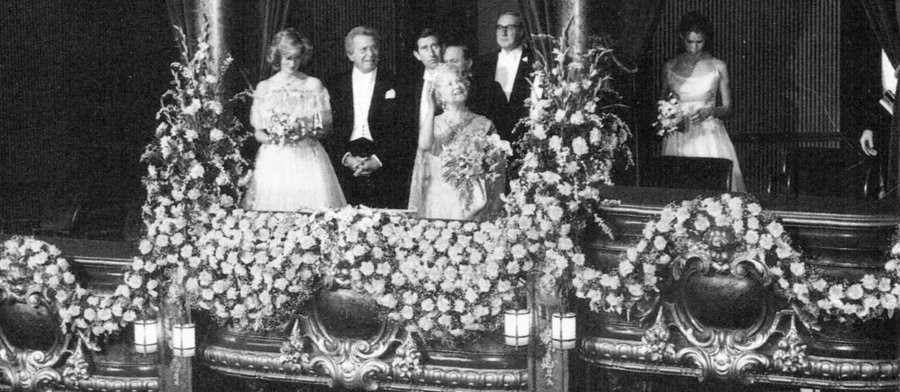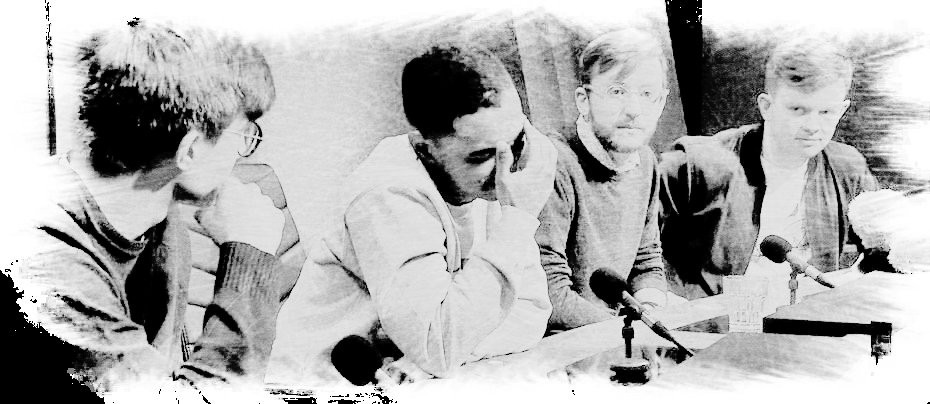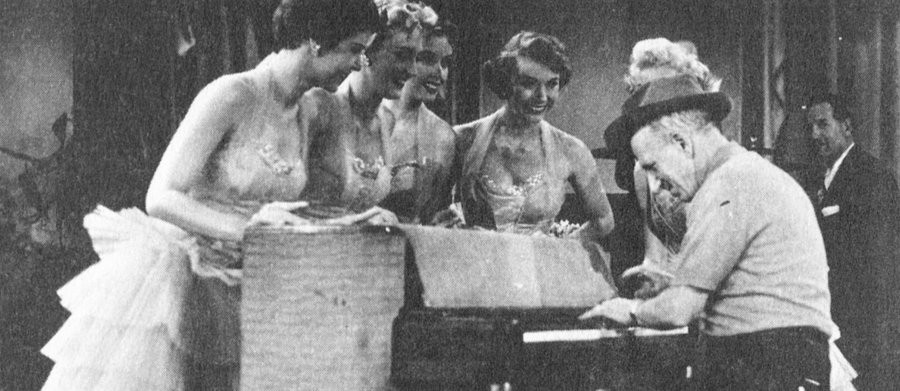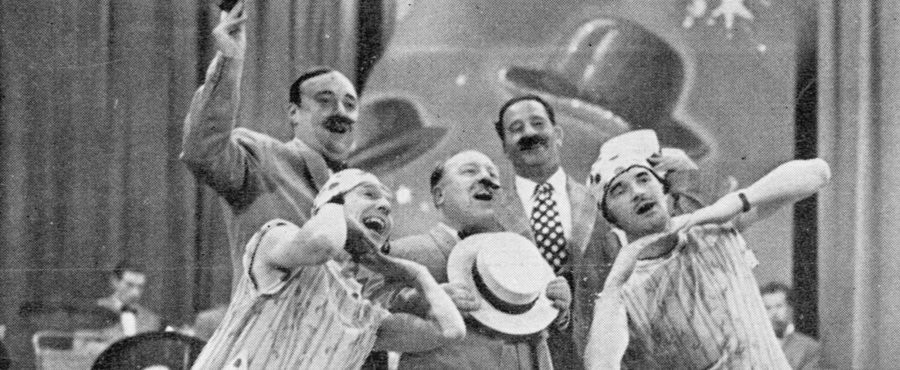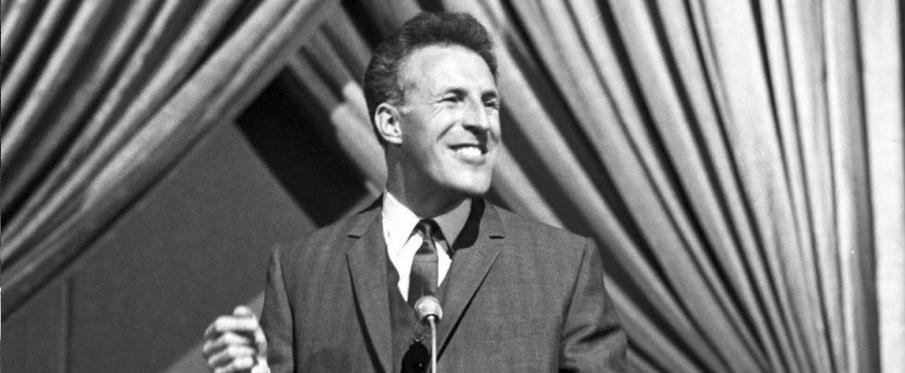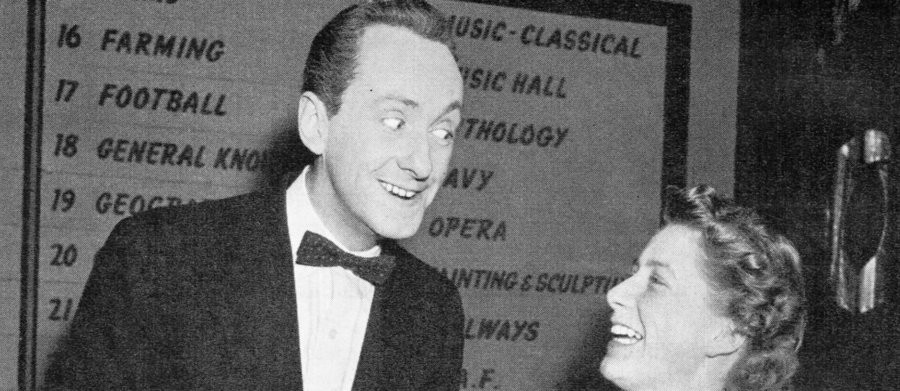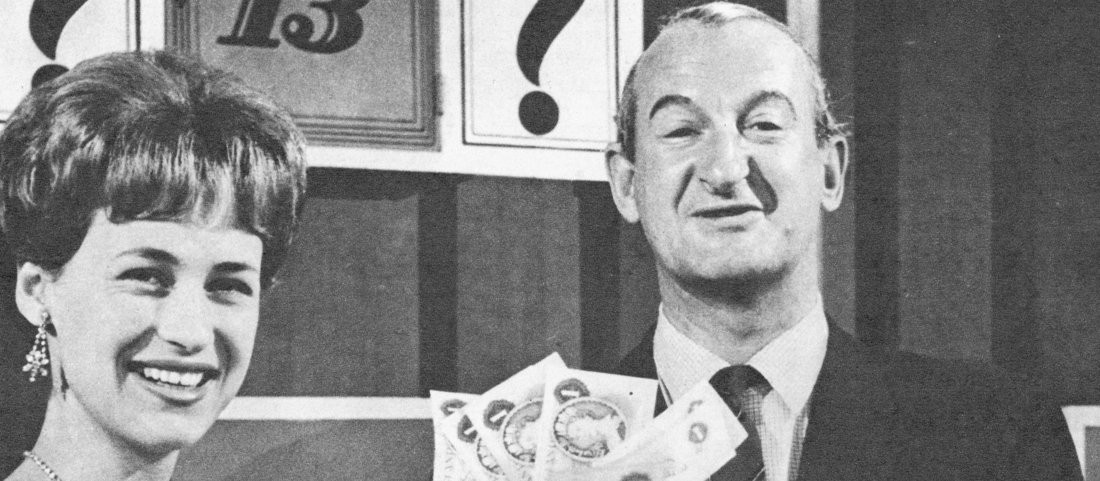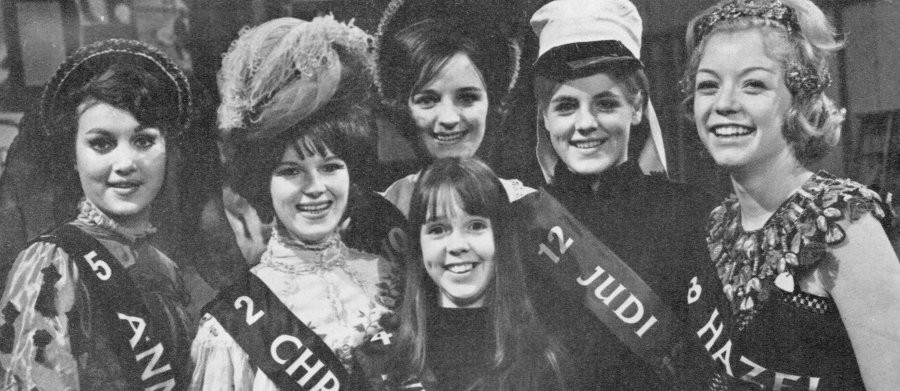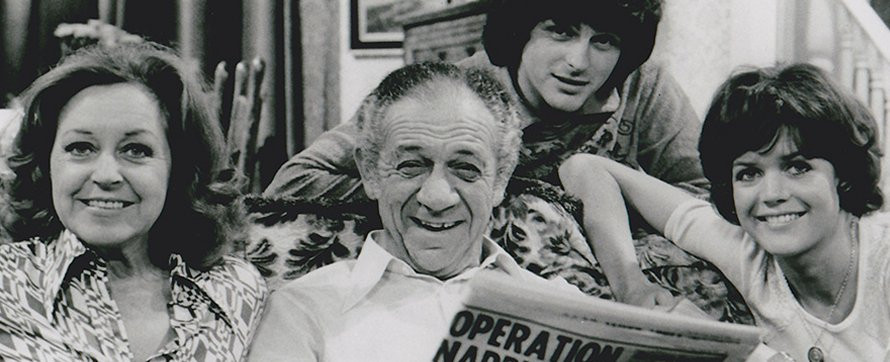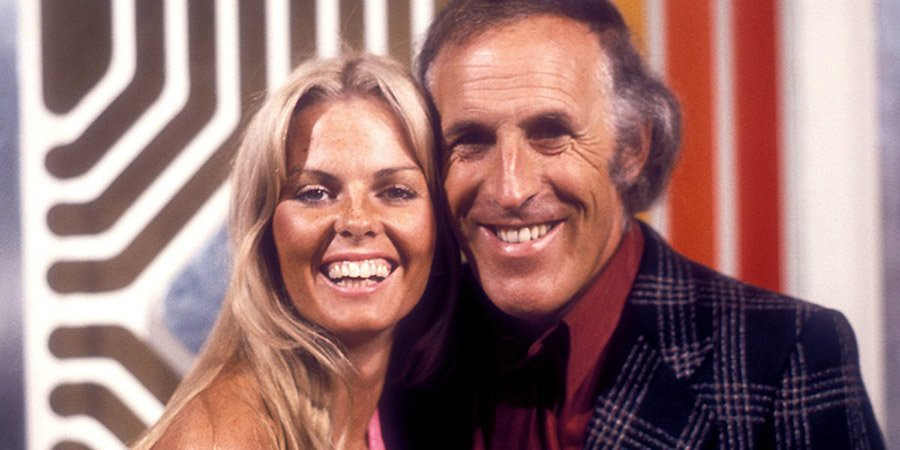
The Generation Game
1971 - United KingdomThe Generation Game, the most popular audience participation gameshow ever to air on British television, is rightly credited to have been inspired by a 1970 Dutch series, Een Van De Aacht (One From Eight), although its roots are firmly set in an earlier gameshow, Beat the Clock, which originated in 1950 in the USA, before being adapted as an integral part of ITV's Sunday Night at the London Palladium.
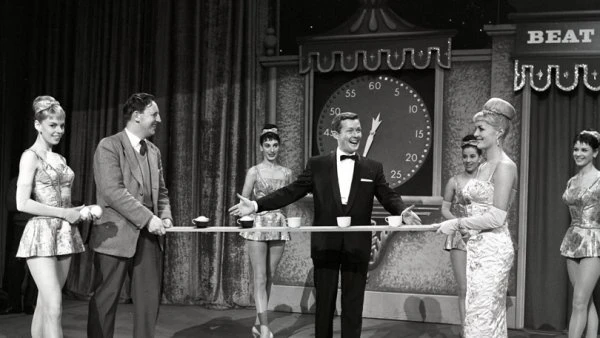
Created by the prolific gameshow creators Mark Goodson and Bill Todman, Beat the Clock let ordinary members of the public attempt difficult, comical stunts, which by today's standards would seem very tame, and often involved whipped cream, mashed potatoes or water balloons. But when the show was adopted as a segment for London's Palladium Show the tasks were toned down even further, lest they seem very un-British. As Senior Studio Manager for ATV, Jim Smith, who would watch tapes of the American show every week explained at the time: "Only 50 per cent (of the American games) turn out to be suitable for our shows. The American's seem to like guying their contestants and think nothing of deluging them with hosepipes and half smothering them in custard pies. With us anything in the way of personal embarrassment is absolutely out." These simple games which would involve solving an anagram on a magnetic board or trying to pick up balloons with the contestant's hands tied behind their back had to be completed within a set time to win a cash prize, whilst a large clock counted down the vital seconds.
The most popular period of Beat the Clock in the UK was during Bruce Forsyth's tenure as host of the London Palladium Shows. Forsyth enjoyed a likeable and mischievous affinity with the contestants, and could make the most of even the slightest of comedy moments. The audience lapped it up.
Seen in Holland by television presenter Maria Antionette "Mies" Bouwman, Beat the Clock's format was developed in 1969 during a brainstorming session with Bouwman, her husband, Leen Timp and VARA Television's Head of Entertainment Joop Koopman. The idea that developed was for two teams of two contestants from the same family, but a different generation (an aunt and nephew or a grandfather and granddaughter), to compete with each other in a number of tasks, normally demonstrated by an expert first, which they then had to imitate, before a winner was chosen.
Een Van De Aacht was presented by Bouwman as a two-hour Saturday night show (although it often ran over its scheduled time) broadcast to a live television audience once a month, and featured celebrity talk-show guests and musical groups. The show ended with the winning gameshow contestant sitting in front of a conveyor belt as prizes passed by and then going home with all the prizes they could remember. The show was a huge hit and broke all TV ratings records in Holland.
In 1970, whilst visiting Dutch Television, the BBC's Head of Light Entertainment, Bill Cotton, saw the show and struck a deal with Mise Bouwman to bring it to the UK. Although, as Cotton recalled in his autobiography, Double Bill, he didn't exactly have to break the BBC's bank to land the deal: "I offered her twenty-five pounds for the copyright. Still, she did well. Once the format became a success in Britain she was able to offer it to German television for a thousand pounds a throw."
Cotton knew exactly who he wanted to host the British version. However, and according to Cotton, Bruce Forsyth was not enthusiastic about the show. Forsyth admits that when he went to see Bill Cotton he had been hoping to talk him into giving him a chat show which would have been a mixture of chat, comedy sketches and musical items. As Bruce put it; "a chat show with a difference." Instead, Cotton put on a tape of the Dutch gameshow. "He (Bruce) was worried about becoming typecast as a gameshow host when he had other talents as an all-round entertainer", wrote Cotton. According to Cotton it was Bruce's agent, Billy Marsh, who persuaded him to take the series.
Cotton decided that they needed to shoot a pilot for The Generation Game as the new show would be called. He enlisted Jim Moir and Colin Chambers to produce it. Having thrashed out the format for the show, which included reducing the original two-hour broadcast to 55 minutes, the pilot went before the cameras and, depending whose view you believe, was either a great success or, as Bruce put it "wasn't quite good enough." However, what both men did agree on was that following the pilot, the first recording to be aired, which was shot on a Thursday 30 September 1971 for the following Saturday's transmission was "a disaster."
The only option left for the production team was to quickly edit the pilot and put it out as the first show. It proved to be the right choice. Hoping for an expected Saturday night prime-time audience of around six-million viewers the team held its breath as the overnight rating came in. 7 million. What's more the show went out to rave reviews and over the ensuing weeks the audience grew bigger and bigger. Within a couple of months fourteen million viewers were tuning in.
As the team became more confident they experimented with new ideas. Bruce came up with the idea of including little plays which were performed by professional actors followed by the contestants copying the pros. Bruce was able to give deliberate misdirection to the contestants and ad-lib through the routines, which, of course the audience loved. During the games themselves if a contestant looked as though they were doing a great job of throwing a pot on a clay wheel or spinning plates on a stick, Bruce would be on hand to give the contestant a sly nudge, normally to disastrous effect. And the audience lapped it up.
Bruce's co-host was Anthea Redfern, a trained dancer and model who had been Miss London in 1970. The two had met when at a 'Lovely Legs' competition in London that Anthea was helping to host. When the producers of the Gen Game were looking for a glamorous assistant for Bruce he remembered her and invited her to audition. Although nervous at first, Anthea soon begin to grow in confidence and Bruce worked some comedy routines that they could do together. Another feature was the long gowns she would wear for the show. On one occasion Bruce invited Anthea to show a particularly stunning gown to the audience by telling her to "give us a twirl." The phrase struck a chord with the audience and became another catchphrase in Bruce's long lines of legendary sayings. At the beginning of each show Bruce would introduce the contestants by inviting the audience to "Let's meet the eight who are going to generate." Another was born out of necessity. Needing a response to the contestants remembering the prizes on the conveyor belt Bruce came up with "Didn't he/she do well?!" It was also on The Generation Game that Bruce first struck his famous Rodin's Thinker pose.
In 1977 the series topped the 20 million audience mark. But the following year Bruce decided that he'd had enough and called time on the show. ITV were offering him his own series which was exactly what he'd wanted from Bill Cotton that day he went to see him and was offered the Generation Game. On the 25 December 1977 the last Bruce Forsyth's Generation Game (as it was now called) was broadcast.
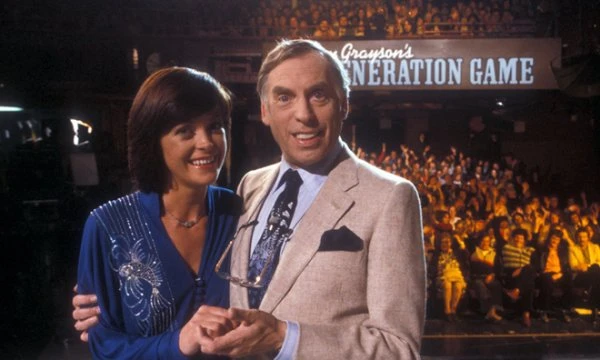
The BBC decided that the format was too good to drop so they went in search of a new host. Bruce's replacement couldn't have been more different. Larry Grayson was a camp stand-up comedian whose act consisted mainly of anecdotes about a cast of imaginary friends; the most frequently mentioned were Everard and Slack Alice. He is often cited as one of the first gay entertainers to have enjoyed mass appeal, although he never made any reference to his sexuality. But according to Bill Cotton, this time it was the pilot that was the disaster. "Larry could do virtually anything on stage other than the thing which really mattered: Explaining to the contestants in simple, clear English just what the games involved. We solved the problem by giving the task to Isla St Clair, a fresh-faced Scottish folk singer we'd booked as Larry's Girl Friday." It worked. Larry Grayson's Generation Game found an even bigger audience, reaching a peak of 25 million viewers. The highest ever rating for a gameshow. At the same time, the series that Bruce Forsyth had left to do on ITV, Big Night, was panned by the critics (some would say unfairly so - but nevertheless it was cancelled after 3 months).
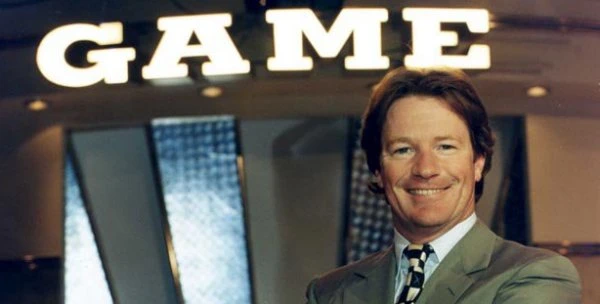
In 1982 the BBC finally cancelled The Generation Game, but that was not the end of it. In 1990 Bruce Forsyth made a triumphant return with the show doing another 4 year stint. He was succeeded by another stand-up comedian. This time it was Jim Davidson's Generation Game. Davidson stayed with the series until its end on 23 December 2001. Since then there has been talk of another revival. In the meantime ITV has taken certain elements of the show for Keep it in the Family hosted by Bradley Walsh, which began airing on ITV from 26 October 2014. In it two families of four participate in a series of rounds for the chance to win prizes, including a family holiday.
In July 2017, the BBC announced that it had commissioned a revival of The Generation Game hosted by Mel and Sue, with an initial run of two episodes.

Given the success of the original series it's quite possible that The Generation Game may come back to our screens again in the near future. And it might be on our screen for generations to come. And if it does; it'll be nice to see it, to see it nice.
Seen this show? How do you rate it?
Seen this show? How do you rate it?
Published on February 5th, 2019. Written by Laurence Marcus "Didn't he do well" (March 2016 & February 2019). Sources: Double Bill by Bill Cotton | Bruce - The Autobiography by Bruce Forsyth for Television Heaven.


